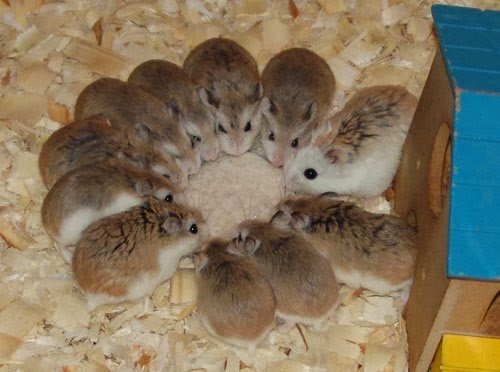
Roborovski hamsters are known for their energetic personalities and adorable looks, making them popular pets. They’re like tiny little acrobats, darting around their cages and providing endless entertainment. But before diving into breeding, it’s crucial to understand their needs and the responsibilities that come with it. Let’s break down everything you need to know, step-by-step, so you can feel confident and prepared.
Understanding the Basics of Roborovski Hamsters
Roborovski hamsters, or “Robos,” are one of the smallest species of hamsters, typically measuring about 2 to 4 inches in length. Originating from the deserts of Mongolia, they have a reputation for being social and lively. These little creatures are generally easy to care for, which makes them great pets for families and individuals alike. However, their breeding process does require some extra attention.
One fascinating thing about Roborovski hamsters is their social behavior. Unlike other hamster species, they can often live in pairs or small groups, especially if introduced at a young age. This social aspect can make breeding more enjoyable, as you’ll get to witness their interactions. But it’s important to remember that not all hamsters get along, so careful introduction is key.
When thinking about breeding Roborovski hamsters, it’s essential to research their life cycle and breeding behavior. They typically reach sexual maturity around 6 weeks old but it’s wise to wait until they are at least 3 months old. This wait allows them to grow physically and emotionally, ensuring healthier babies.
Preparing for Breeding
Before you jump into breeding, you need a solid preparation plan. Here are the key steps to setting the stage for breeding success:
- Ensure you have a suitable breeding pair: Choose healthy, ideally unrelated Roborovski hamsters. Look for hamsters that are active, alert, and free of illness.
- Set up a proper breeding environment: A spacious cage with ample ventilation and hiding spots is essential. Make sure the cage is stress-free and free from loud noises. A calm environment helps the hamsters feel safe.
- Monitor their health: Regular vet checkups can catch any potential problems before they affect your breeding plans. Healthy hamsters will help produce healthy babies!
You’ll also want to stock up on supplies—things like bedding, food, and water bottles should be readily available. Keeping their living space clean and cozy is just as important as the food you provide.
The Breeding Process
Once you’ve prepped everything and have your pair ready, it’s time to consider the actual breeding process. When introducing a male and female, you want to do this in a neutral space. This minimizes territorial behavior. Place the female in the male’s cage and watch for signs of interest—this usually involves sniffing and some playful behavior.
After the pair mates, the female should be put back into her cage. Here’s where it gets interesting: the gestation period for Roborovski hamsters lasts about 21 to 30 days. During this time, she’ll need extra care. A well-balanced diet rich in protein is crucial to support her developing pups. Offer her plenty of fresh fruits and veggies, along with high-quality hamster mix.
Keep an eye on her behavior. If she becomes more reclusive or builds a nest, those are good signs she may be preparing for babies. Nesting is an important instinct, as it provides a safe place for her to give birth.
Caring for the Babies
Once the babies arrive, it’s all about providing the best care. Roborovski hamsters are usually born blind and hairless, but they grow quickly. Here are some tips on how to care for them:
- Let the mother do her thing: It’s best to let the mother handle the babies without too much interference. She knows what to do!
- Provide supplemental food: The mother will need extra nutrition to keep up with her demands. High-quality hamster mix and fresh veggies should be plentiful.
- Keep the environment clean: Change bedding regularly to prevent infections and keep the area sterile.
As the pups grow, you can begin to handle them gently after about 2-3 weeks. This helps them get used to human interaction. Keep in mind that once they reach about 4 weeks old, you will need to separate the males and females to prevent any accidental breeding.
Common Challenges in Breeding
Breeding isn’t always a straightforward process, and you may encounter several challenges along the way. Here are a few common issues new breeders face and how to tackle them:
– Compatibility: Not all hamsters get along, so introductions can sometimes go sideways. Always observe behavior closely when introducing a new pair. If aggressive behavior occurs, separate them immediately to avoid injuries.
– Health complications: Sometimes, a female hamster may experience health problems during pregnancy or after giving birth. Keep a close watch on her for any signs of distress, such as lethargy or loss of appetite. Consulting a vet promptly can make a significant difference.
– Overpopulation: If you’re breeding Roborovski hamsters, you must have a plan for the babies once they’re weaned. Consider reaching out to local shelters or friends who might be interested in adopting a lively pet.
Breeding is a commitment, and it requires thoughtful planning, attention, and responsibility over the lives you’re bringing into the world.
Breeding Roborovski hamsters can be a rewarding experience, but it’s important to remember that it comes with a host of responsibilities. By preparing adequately and understanding their needs, you can create a nurturing environment for both the parents and pups.
It’s a bit like tending to a garden; you plant the seeds, care for them, and with patience, you’ll see the blossoms grow. Breeding these little creatures can bring joy not just to you, but also to those who will take in the adorable offspring. With the right knowledge and love, you’ll be well on your way to becoming a responsible hamster breeder.
